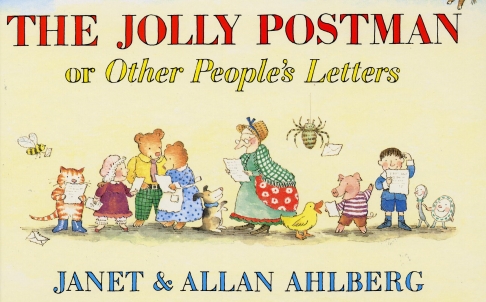I have fond memories of writing many letters to many people in my youth. In fact, cherished relationships were built and strengthened through letters. In Year 10, a friend wrote a one-page Arthurian story with characters that mirrored our circle of friends and passed it to me to read.
I continued the story by adding a page or two and returned it a week later, and thus began our year-long correspondence of continuing each other’s stories, filled with parallels, metaphors, allusions and even illustrations.
Around the same time, I learned of a local Vancouver artist who had just published a series known as Griffin and Sabine. Nick Bantock created intricately illustrated postcards and letters, sent to and from mystical fictional places, to tell the story of the two main characters. The series is packaged in a wooden box, with removable postcards enclosed in an envelope affixed to each page of the books. That wooden box has been at the centre of my bookshelf for more than two decades, and I have yet to come across a more enthralling epistolary novel.
Composed entirely of letters or diary entries, the style of writing adds greater character development and reader engagement than a story told by a single narrator or in the third person. Janet and Allan Ahlberg’s The Jolly Postmanis the only other book I know which is designed in the same format as Griffin and Sabine, with actual letters in envelopes on each page. In this entertaining read, perfect for primary school children, the postman delivers letters (and the odd junk mail) to familiar fairy-tale characters. The Jolly Postman provides endless possibilities for classroom use, to teach children about how to write letters and address envelopes.
Another good teaching tool is Simon James’ Dear Mr Blueberry. During summer holiday, a little girl writes to her teacher asking about whales because she has found one in her pond. Her teacher writes back and explains that whales do not live in ponds. The correspondence continues, using the epistolary style as a fun and interesting way for readers to learn about whales. The format of the story also shows readers how to present compelling arguments to persuade another person to believe one’s point of view.
In the same vein of cheeky humour is Drew Daywalt’s The Day the Crayons Quit. In this story, each colour in a young boy’s box of crayons writes him a letter detailing their respective grievances, except for the green crayon, “happy with his workload of crocodiles, trees and dinosaurs”. Illustrated by award-winner Oliver Jeffers, this letter-writing campaign is an ingenious way to show the perspective of the hard-working crayons.
Dear Mrs LaRue: Letters from Obedience School by Mark Teague is a picture book consisting of letters from a dog to his owner. Ike the dog behaves so badly that Mrs LaRue sends him to obedience school. Ike writes to her, complaining of misperceived indignities and maltreatment, with droll depictions of what Ike perceives (illustrated in black and white) set against what is actually happening (shown in colour).
Letter writing forces us to communicate our intentions through succinct and thoughtful language. Electronic communications, with cut-and-paste, delete, spellcheck and other functions, cannot replicate the authenticity of a written letter. Sadly, my letter writing is now limited to thank-you cards.
I am stockpiling a modest inventory of assorted fold-and-send stationery for my daughters, in the hope that they will one day find joy in the singular art of letter writing.
Annie Ho is board chairwoman of Bring Me A Book Hong Kongbringmeabook.org.hk a non-profit organisation advocating family literacy
